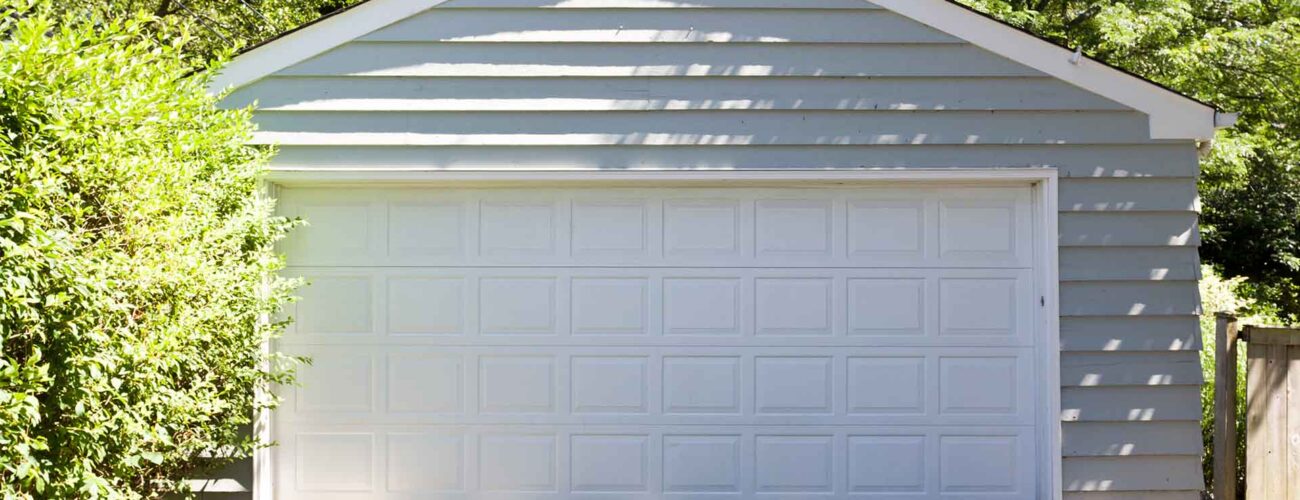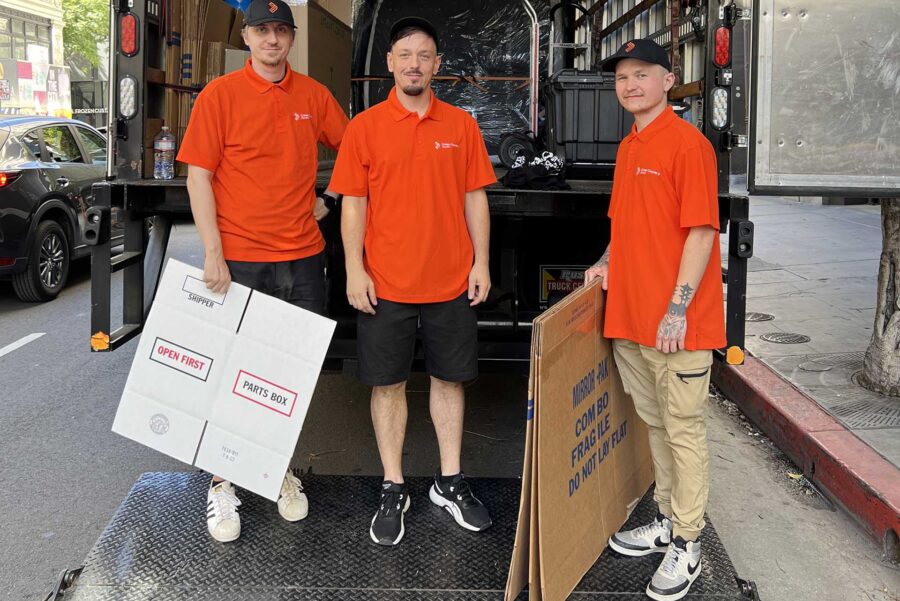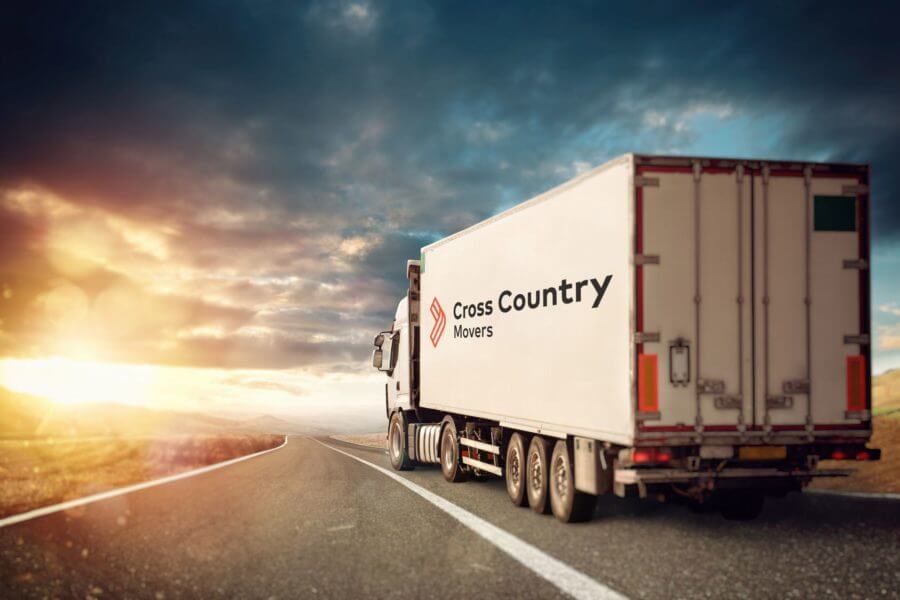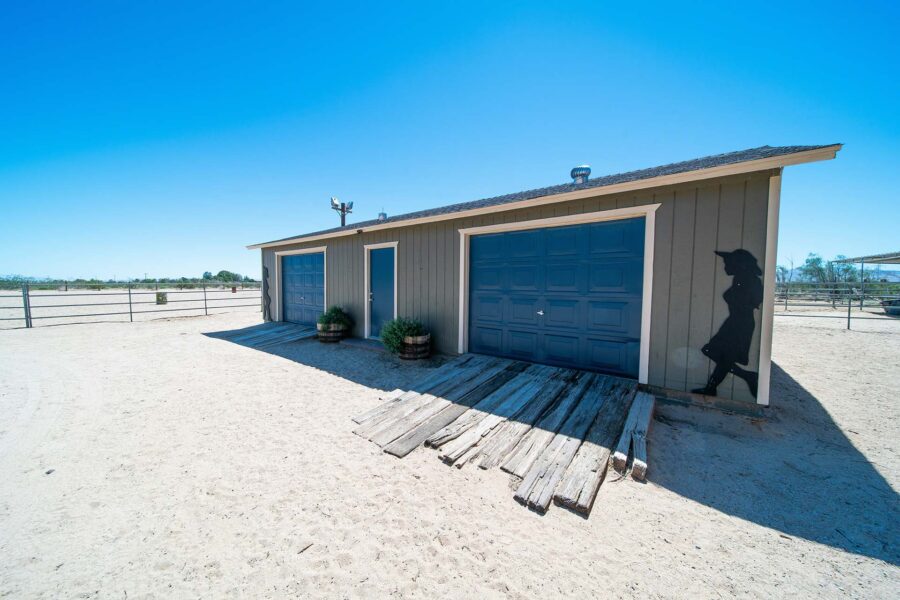

Relocation Made Easy – A Step-by-Step Guide on How to Move a Garage
Posted in How-to on May 8, 2024
Thinking about how to move a garage can bring on a headache faster than assembling a tool rack! But fear not—we’ve cracked the code on the ultimate garage relocation. Our step-by-step guide is the secret weapon to transforming what seems like a cluttered chore into a smooth adventure. Say goodbye to moving mayhem and hello to your new garage haven!
How to Move a Garage?
Navigating the basics of relocating a workshop involves more than just boxing up screws and hammers.
The real challenge lies in crafting a solid strategy to plan a move that’s both efficient and safe.
Key to this process is ensuring you can move safely, particularly when it comes to transporting heavy garage equipment.
The key is to set a budget, call the movers, and transport only the necessary tools and equipment.
Remember that for everything to go smoothly, you must gather appropriate equipment and packing supplies.
Step 1 – Determine the Type of Garage You Have
It’s imperative to inform yourself of safe moving practices for garages of a certain type. Identifying the specific category of your structure is crucial, as it directly influences the approach and relocation tips you’ll need to follow.
Each type has its own set of challenges and requirements, from how to properly dismantle structures to the safest methods of transporting your belongings. Here’s a comprehensive list of various types there are:
- Attached or integrated,
- Detached garages,
- Carports,
- Portable garages,
- Workshops,
- Barns,
- Breezeway.
The long-distance movers you hire can greatly benefit from extra information about the structure that needs to be moved upon the first contact.

Step 2 – Create a Detailed Plan
A detailed plan is your roadmap to a successful transition, acting as a safeguard against common moving mistakes and a strategy to avoid relocation stress. This plan should encompass a comprehensive inventory and categorization of all items within your space. Meticulously document everything from the smallest screw to the largest piece of machinery so that nothing is overlooked.
Additionally, setting a realistic timeline and schedule for the move is vital. Consider the complexity of disassembling, packing, and transporting each category of items. This timeline should account for unexpected delays and provide ample time for each task, ensuring a smooth and orderly transition from one location to another.
Step 3 – Set an Appropriate Budget
Organizing a garage move requires a relocation budget so that the process is as cost-effective as possible.
Take into account various factors that can influence the overall cost to move a garage.
These factors include the size and complexity of your space, the distance of the move, and whether you’ll require professional moving services.
Select the cheapest time of the year to move, as rates for moving services can vary significantly based on seasonality.
To set an appropriate budget, start by getting estimates from several moving companies if you’re considering professional help. Don’t forget to include the cost of packing materials, potential insurance, and any necessary storage fees.
Decide Whether to Hire Movers or Do Everything Yourself
Given the complexities and the potential for damage during transport, it’s better to choose long-distance movers and invest in cross-country moving services. These experts bring the necessary equipment and vehicles as well as a level of expertise.
While the option to manage the process with the help of family and friends exists, the risks involved with such a significant task often outweigh the potential savings. DIY garage moving strategies can be utilized, but at the end of the day, it might take too long to get everything done by yourself.

Step 4 – Sort and Declutter the Garage
The initial step in preparing for a thorough workspace decluttering involves deciding what to keep and what to get rid of. This critical phase allows for a more organized and efficient packing process. Items can be categorized into those to keep, donate, sell, or dispose of.
Donating unwanted items not only clears space but also benefits others. Organizations like Goodwill and Salvation Army are excellent options for giving these items a new purpose. Furthermore, organizing a garage sale and decluttering or donation drive can further simplify the decluttering process. Only essential items should make it to the new location.

Step 5 – Gather Necessary Tools and Equipment
The array of different packing materials — such as bubble wrap, packing peanuts, and sturdy boxes — plays a crucial role in protecting items during transport. Packing tools for relocation, including tape dispensers, labels, and markers, are indispensable for securing belongings. Specialized equipment may also be required for heavier or more delicate items. Investing time in gathering these supplies can prevent last-minute relocation rushes.
Step 6 – Package and Label Belongings
When packing tools and machinery, selecting the best-sized boxes is crucial. These boxes should comfortably fit the items without leaving excessive space that could lead to movement and damage. Utilize quality packing materials like bubble wrap and packing paper to protect these items within the boxes.
When you pack a garage, label each box with its contents and destination within the new workshop. Documenting the inventory of packed items enhances organization and ensures nothing is overlooked during unpacking.
Safely Handle Bulky and Heavy Items
The safe handling of bulky and heavy items, such as moving vehicles and machinery, demands careful preparation and the right equipment. Utilizing dollies, ramps, and hand trucks can significantly reduce the risk of injury and damage to these items.
Before preparing for a relocation, assess each item’s weight and dimensions to choose the appropriate moving aids. It’s essential to secure heavy items properly to prevent shifting during transport.
Don’t Pack Items That Cannot Be Moved
Certain items are not suitable for professional movers to transport and require personal handling. Here are items not moved by movers:
- Hazardous materials (e.g., paint, chemicals, gasoline),
- Flammables,
- Perishable food,
- Plants.
These items either pose a risk during transport or are too personal or valuable to entrust to others. Planning for their safe transition separately ensures compliance with safety regulations and the secure arrival of all belongings.

Step 7 – Get in Touch With Professional Long-Distance Movers
When investing in long-distance moving services, initiating contact with a reputable moving company is the first step. Begin by conducting thorough research to identify companies with positive reviews and a track record of reliability. Ask how much does it cost to move a garage and what can be expected on relocation day.
Upon selecting a potential cross-country moving company, reach out to discuss your specific needs, including the scope of the workspace transition and any special requirements for heavy or delicate equipment. It’s crucial to set a tentative date early in the process and provide detailed information about the origin and destination locations.
Make Sure the Movers Are Reliable
Choosing a long-distance moving company requires diligence to ensure its reliability and the safety of your belongings. Start by verifying the company’s credentials, including licensing and insurance, to check whether it is legitimate.
Online reviews and testimonials can offer insights into past customers’ experiences, highlighting the company’s strengths and areas for improvement. Ask for references and directly contact past clients to discuss their satisfaction with the service provided. Transparent communication about pricing, services, and policies is also essential to avoid unexpected costs or complications. Know that Cross Country Movers prides itself on transparent and reliable services.

Step 8 – Set Up the New Garage
After the transition, the focus shifts to establishing the new garage. Garage layout planning is a crucial first step, allowing for an efficient use of space. The tools and equipment need to be accessible. Unpacking should proceed methodically, with items placed according to the pre-planned layout.
This is also the perfect time to consider upgrading your storage solutions and organization systems. Installing shelving units, cabinets, and wall organizers can greatly enhance the space’s functionality. Proper organization not only makes the workspace more efficient but also creates a more pleasant environment for working on projects or storing vehicles and tools.
Bonus Tips – How to Move Detached Garages?
When considering the relocation of detached structures, prioritizing safety and structural integrity is crucial. Engaging a professional contractor for a thorough inspection is a wise initial step to confirm the facility’s condition. Such an examination will assess the walls, floor, and roof, determining the structure’s viability for relocation.
After ensuring the facility is fit for movement, precise measurements of the new location are essential. Preparation involves establishing a sturdy foundation. In this way, it remains dry for the arrival of the structure. The actual relocation process requires careful planning. Constructing a canal around the structure facilitates the secure lifting onto rails.

Contact Us and Have the Experienced Crew Handle Everything
From determining the type and preparing a detailed plan to setting a budget and safely packaging belongings, each step demands meticulous attention to detail. The journey doesn’t stop there. Selecting the right long-distance moving services plays a pivotal role in ensuring a seamless transition. This is where Cross Country Movers’ expertise comes into play.
We specialize in managing every aspect of your relocation needs, offering a stress-free solution. By recapping the essential stages and emphasizing the importance of professional assistance, we underscore our commitment to excellence. Contact us, Cross Country Movers, to leverage our extensive experience for an effortless and efficient relocation. Our seasoned crew is prepared to handle everything. We also offer storage, auto transport, and packing services, so moving a garage will be smooth and easy.
Frequently Asked Questions About Moving a Garage
How Do I Start Planning My Garage Move?
To initiate the planning process for relocating the workspace, assess the type of facility you have and create a detailed inventory of belongings. Set a realistic timeline and budget so that the transition is smooth.
What Are the Best Ways to Pack and Transport Tools and Equipment?
When preparing tools and equipment for relocation, prioritize safety by using proper packing materials and techniques. Utilize sturdy boxes and padding to protect items from damage during transport. Label each box clearly to facilitate organization and unpacking.
How Can I Safely Move Heavy Machinery?
For safely moving heavy machinery, enlist the help of professionals or gather a team of helpers to assist with the process. Utilize specialized equipment such as dollies, ramps, and hand trucks to minimize the risk of injury and damage.
What Should I Do With Items I No Longer Need?
Items you no longer need can be donated, sold, or disposed of responsibly. Organize a garage sale or donation drive to simplify the decluttering process and give unwanted items a new purpose.
How Do I Set Up My New Garage Efficiently?
Setting up your new workspace efficiently involves planning the layout, unpacking and organizing tools and equipment according to your predetermined system, and installing storage solutions and organization systems. Take measurements and prepare the new space beforehand to ensure a seamless transition.








